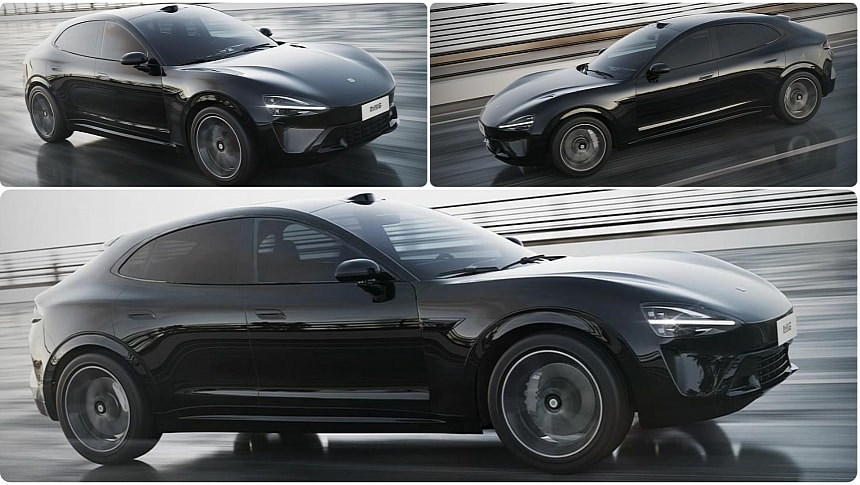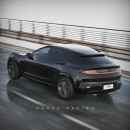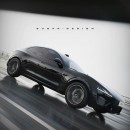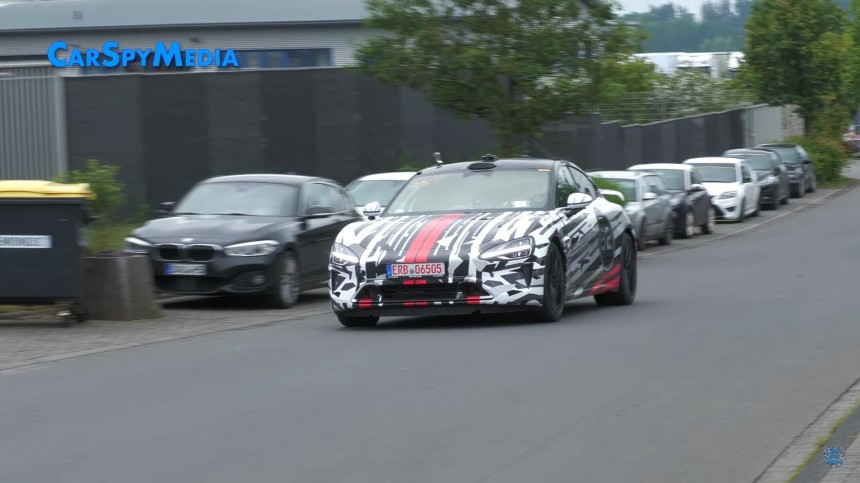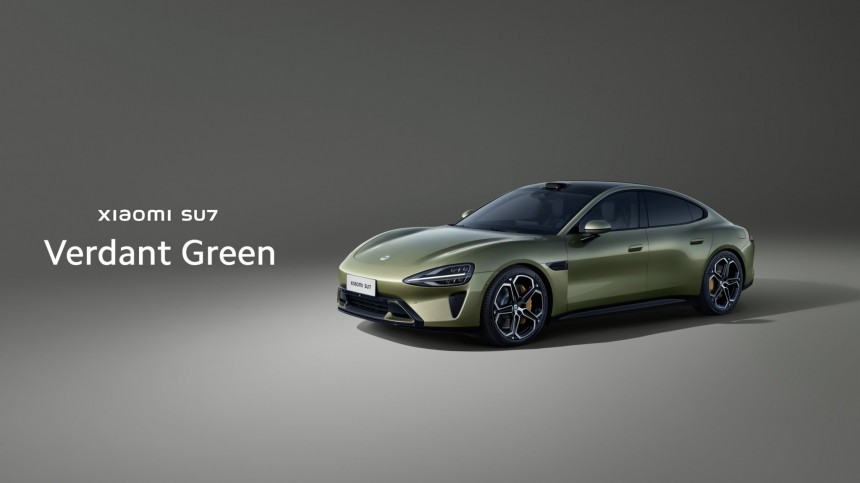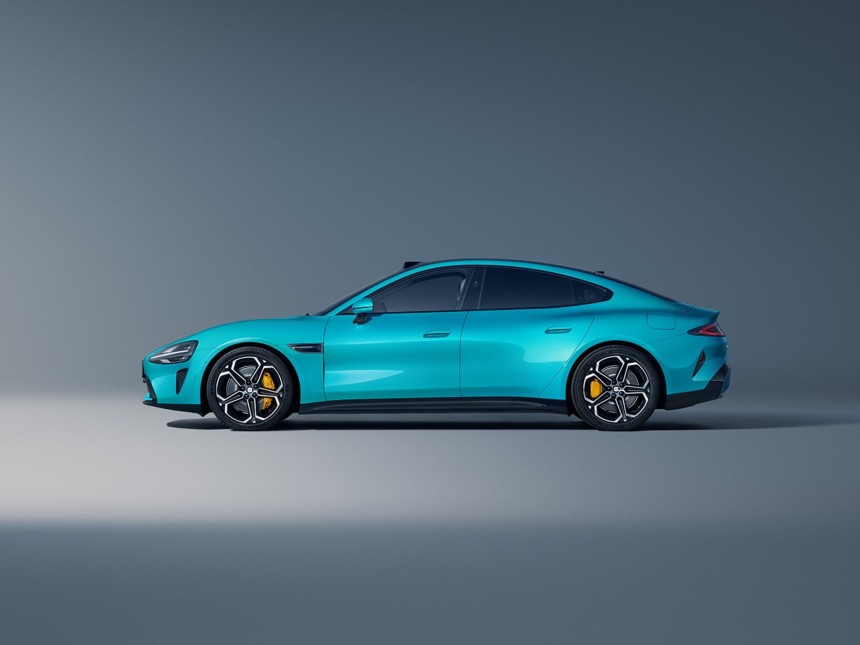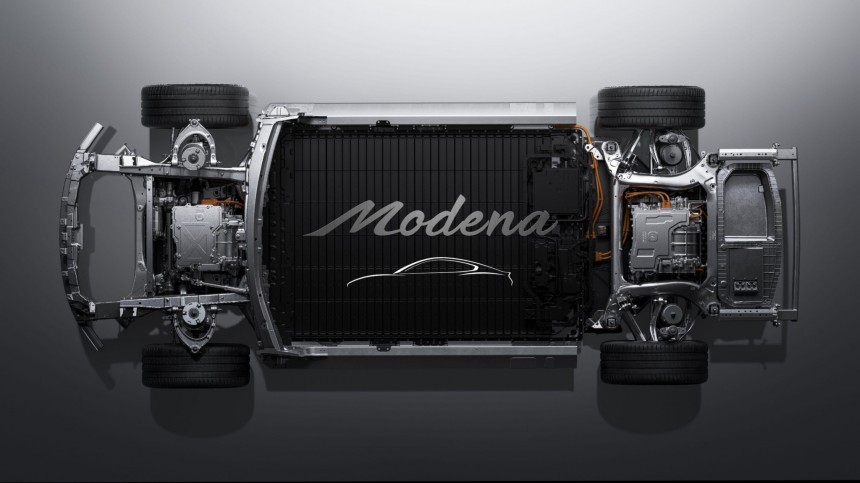In a world where buying a brand-new car represents quite a financial effort because of inflation, greed, government emission targets, and who knows what else, more affordable battery-powered rides like the Xiaomi SU7 or the upcoming SU8 eSUV are not a few people's simple desires but a necessity for many. China makes these vehicles, and they boast a premium-luxury exterior look. The latter might just be a winner.
But behind an affordable price hides a very complicated geopolitical problem and a major challenge for the European, American, and Japanese automotive industries. You see, the trick with EVs is that you need a shorter supply chain to make them work for everyone, including the global climate. If the raw battery materials are mined in Australia, refined in Saudi Arabia, packaged into cells in Denmark, and assembled into packs in the US, the initial carbon footprint of an EV will be humongous. That's not what you want.
EVs appeared as an answer to a global climate necessity, not because someone discovered that a battery-powered automobile could be much better than a conventional motor vehicle. Even though many of us have forgotten, automakers have explored the realm of zero-tailpipe emission cars since the 19th century.
The most recent and well-known attempts belong to GM, with its quirky EV1. Sadly, the brand sought to destroy and eliminate it from the collective memory in 2001 because the auto giant reportedly thought it would be unprofitable. Only a few units survived.
Then, Tesla made the EV happen. It took a lot of work, courage, and support (from Daimler and Toyota at first) to create the first-gen Lotus Elise-based Roadster, the Model S, and, eventually, the Model 3 and Model Y, which are commonly known as the "EVs for the masses."
Nowadays, everyone has an EV in their portfolio, including the brands that have consistently been saying that this type of propulsion is nothing but a fad. Look no further than the Toyota bZ4x.
On top of that, Bentley and Ferrari have been playing with plug-in hybrid tech and are surely preparing to bring forward battery-powered vehicles of their own. Just look at the new Continental GT or the SF90.
These brands figured out that electric propulsion is good for two things: creating torque at very low rpm and lowering fleet-wide emissions. The latter is possible thanks to weird standardized consumption tests that give high-performance and heavy rides like the new BMW M5 a CO2 emission rating of 39 g per kilometer (63 g per mile). The hybrid 2024 Toyota Prius with half the cylinders emits 97 g per kilometer (155 g per mile).
Today, for many people around the world, the default choice for an EV is a Tesla Model Y or Model 3. After all, the former was last year's best-selling car. By choosing a Tesla, customers make sure they'll have peace of mind because the brand has service centers virtually everywhere and invested in a high-power charging network before anyone else.
But the now-Texas-based brand sought to maximize its profit margins after it was very close to bankruptcy during the Model 3 production ramp-up in 2018. So, it made its affordable cars feel like soulless computers on wheels that have only one center display and no instrument cluster or physical controls. The refreshed EV doesn't even have stalks anymore.
As such, when someone looks at an EV made by another manufacturer and compares it to a Tesla Model 3 or Model Y, they see that there's more to EV ownership than dealing with a lackluster cabin design. Porsche, BMW, and even Mercedes-Benz make battery-powered rides that feel and look lightyears ahead of the Model 3. The problem is the cost.
The orders that came immediately after the official introduction covered the production capacity until the end of the year, but early customers who took delivery discovered that Xiaomi hadn't found a magic solution for typical first-year production issues. Some units broke down immediately after the driver left the "dealership," while others were delivered with misaligned trim or very low-quality materials. Some even had problems with the brake system or airbags. Those issues prompted many to cancel their orders.
But Xiaomi isn't giving up. It's testing a new version of the China-only SU7 Max (the top trim) on the Nurburgring. It could be gunning for the Taycan Turbo GT. After all, the EV's body seems to have been shaped after Porsche's first EV.
The Asian nation's auto industry had a reputation for being a copycat, but after poaching many European and American automotive experts, it found a way to establish a design strategy that worked for itself. Still, it seems that European automotive design continues to inspire Xiaomi.
The brand is already trying to fix the SU7's most pressing issues and is also preparing to launch a midsize SUV. That would be a smart move, considering that the Model Y is extremely popular.
But the so-called SU8 is likely going to be another Chinese vehicle with an exterior design heavily influenced by what top European brands put out.
Spy photos and renderings coming from artists like SugarDesign, who have made a name for themselves by correctly envisioning the production-ready form of many upcoming cars, are revealing a battery-powered ride that looks like the Ferrari Purosangue from the front and the side, with windowed surfaces taken from the Macan or the Tyacan, a C-pillar that seems to have been removed from the Ford Mustang Mach-E, and a rear-end that may remind many of Lincoln or Genesis. Yes, some could also say that the eSUV resembles the Mazda CX-30 from the side. And that's not a bad thing!
You see, nobody cares what Elon Musk says or does in China. New car buyers want something good that's priced appropriately. That's why they bought the Model Y in droves and could fall in love with a domestic brand that makes something better than the established sales champion.
Don't be impressed by that number, though. Europe, the US, Canada, and even the UK are struggling to accept that the Chinese auto industry could rapidly expand outside the Asian nation's borders.
They don't necessarily fear Chinese cars, but they do mind that the country has a strong grip on the supply chain and high-voltage battery manufacturing. That's why it can manufacture cool EVs that are affordable. That could become a (major) issue for brands such as Ford or Renault. So, Xiaomi and the likes of it will have to put up with tariffs. They had a window to take over the Euro market but didn't rush. Now, it seems like that endeavor is at a premature but much-needed end.
Still, someone will still lose something. Tesla values the Chinese market, while other brands like Toyota or Mercedes-Benz have joint ventures in the country so they can sell automobiles to almost 963 million people. If Xiaomi gets it right, it could dethrone the Model Y and destroy the ambition of other companies that might have thought about being very successful in the Asian country.
The real test will come in 2025, when the first Xiaomi SU8s will reach customers. Until then, China can continue to leverage the might of entities such as Geely to take over more Volvo-like brands instead of exporting pricey EVs to Europe and North America.
Ultimately, my bet is that the SU8 will conquer many hearts and wallets.
EVs appeared as an answer to a global climate necessity, not because someone discovered that a battery-powered automobile could be much better than a conventional motor vehicle. Even though many of us have forgotten, automakers have explored the realm of zero-tailpipe emission cars since the 19th century.
The most recent and well-known attempts belong to GM, with its quirky EV1. Sadly, the brand sought to destroy and eliminate it from the collective memory in 2001 because the auto giant reportedly thought it would be unprofitable. Only a few units survived.
Then, Tesla made the EV happen. It took a lot of work, courage, and support (from Daimler and Toyota at first) to create the first-gen Lotus Elise-based Roadster, the Model S, and, eventually, the Model 3 and Model Y, which are commonly known as the "EVs for the masses."
An ever-changing world
But the big issue is that brands like Rolls-Royce, Porsche, Audi, and BMW put out cool EVs of their own, too. Mercedes-Benz would have deserved a mention as well if it weren't so confused about what the EQ lineup should be and look like.On top of that, Bentley and Ferrari have been playing with plug-in hybrid tech and are surely preparing to bring forward battery-powered vehicles of their own. Just look at the new Continental GT or the SF90.
These brands figured out that electric propulsion is good for two things: creating torque at very low rpm and lowering fleet-wide emissions. The latter is possible thanks to weird standardized consumption tests that give high-performance and heavy rides like the new BMW M5 a CO2 emission rating of 39 g per kilometer (63 g per mile). The hybrid 2024 Toyota Prius with half the cylinders emits 97 g per kilometer (155 g per mile).
But the now-Texas-based brand sought to maximize its profit margins after it was very close to bankruptcy during the Model 3 production ramp-up in 2018. So, it made its affordable cars feel like soulless computers on wheels that have only one center display and no instrument cluster or physical controls. The refreshed EV doesn't even have stalks anymore.
As such, when someone looks at an EV made by another manufacturer and compares it to a Tesla Model 3 or Model Y, they see that there's more to EV ownership than dealing with a lackluster cabin design. Porsche, BMW, and even Mercedes-Benz make battery-powered rides that feel and look lightyears ahead of the Model 3. The problem is the cost.
Striking at the core
And that's where Xiaomi comes in. The phone maker is doing something Apple refused to do, and it could all become a great venture for the hopeful Chinese brand. Its SUV7 sedan may have had a rough start, but the $30,000 Porsche Taycan-inspired EV with 295 hp on tap in rear-wheel-drive form or a maximum power output of 664 hp when equipped with two motors has been conveniently priced to put the Tesla Model 3 in its grave.But Xiaomi isn't giving up. It's testing a new version of the China-only SU7 Max (the top trim) on the Nurburgring. It could be gunning for the Taycan Turbo GT. After all, the EV's body seems to have been shaped after Porsche's first EV.
The Asian nation's auto industry had a reputation for being a copycat, but after poaching many European and American automotive experts, it found a way to establish a design strategy that worked for itself. Still, it seems that European automotive design continues to inspire Xiaomi.
The brand is already trying to fix the SU7's most pressing issues and is also preparing to launch a midsize SUV. That would be a smart move, considering that the Model Y is extremely popular.
But the so-called SU8 is likely going to be another Chinese vehicle with an exterior design heavily influenced by what top European brands put out.
You see, nobody cares what Elon Musk says or does in China. New car buyers want something good that's priced appropriately. That's why they bought the Model Y in droves and could fall in love with a domestic brand that makes something better than the established sales champion.
A champion in the making?
Although still in development, rumors say that the coupe-fied SU8 (codenamed MX11) could have a maximum range of about 490 miles (789 kilometers) and a maximum power output higher than the SU7. It might also debut new advanced driver-assistant technology, a slightly higher quality interior, and impressive smartphone integration. Prices are rumored to start from around RMB 200,000 (USD 27,521).Don't be impressed by that number, though. Europe, the US, Canada, and even the UK are struggling to accept that the Chinese auto industry could rapidly expand outside the Asian nation's borders.
Still, someone will still lose something. Tesla values the Chinese market, while other brands like Toyota or Mercedes-Benz have joint ventures in the country so they can sell automobiles to almost 963 million people. If Xiaomi gets it right, it could dethrone the Model Y and destroy the ambition of other companies that might have thought about being very successful in the Asian country.
The real test will come in 2025, when the first Xiaomi SU8s will reach customers. Until then, China can continue to leverage the might of entities such as Geely to take over more Volvo-like brands instead of exporting pricey EVs to Europe and North America.
Ultimately, my bet is that the SU8 will conquer many hearts and wallets.
